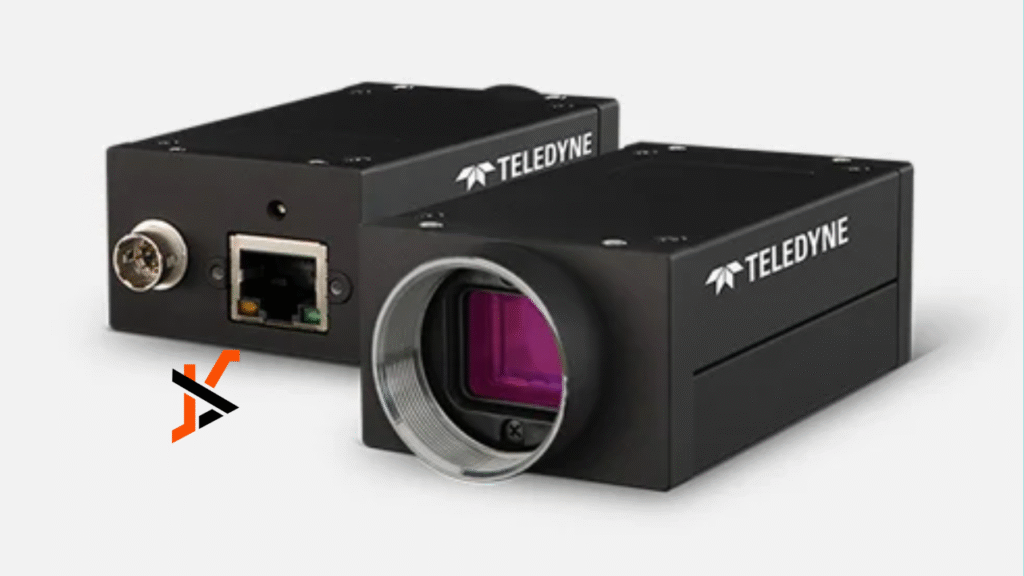In the fast-evolving world of industrial automation, precision, speed, and scalability are no longer luxuries—they’re absolute necessities. Whether it’s semiconductor inspection, robotic guidance, surface defect detection, or pharmaceutical packaging, one technology stands out as a critical enabler: the GigE Camera.
Gigabit Ethernet (GigE) cameras have become indispensable to machine vision systems in industries ranging from automotive to electronics to food processing. Their ability to deliver high-speed data transmission, robust performance, and scalable integration into existing network infrastructures makes them the preferred choice for system integrators and automation engineers.
If you’re planning to upgrade your machine vision capabilities or are starting from scratch, it’s crucial to shop at VA Imaging, where you’ll find a carefully curated selection of industrial-grade GigE cameras that meet stringent performance and durability standards. From entry-level models to high-end, high-resolution sensors, VA Imaging provides the tools that keep modern production lines moving efficiently and intelligently.
Understanding the core benefits of GigE camera technology
At the heart of machine vision is the need for real-time data acquisition, image clarity, and minimal latency. GigE cameras offer several unmatched advantages:
High data transfer speeds
A GigE camera uses the Gigabit Ethernet interface, allowing transfer rates of up to 1 Gbps. This makes it suitable for high-resolution, high-frame-rate applications—crucial in fast-paced environments like conveyor belt inspections or robotic arm positioning.
Long cable lengths
One of the biggest bottlenecks in industrial setups is cable length limitations. Unlike USB-based solutions, GigE cameras can transmit data over cables up to 100 meters without signal degradation, providing flexibility in camera placement, even in large facilities.
Cost-effective scalability
Since GigE is a standard interface in most industrial and IT infrastructures, integrating GigE cameras doesn’t require proprietary cabling or switches. You can connect multiple cameras to the same network, simplifying system expansion while keeping costs under control.
Applications of GigE cameras in modern industries
Automotive manufacturing
GigE cameras help in defect detection, assembly verification, and surface inspections. Their fast data transfer enables real-time analysis and decision-making on high-speed production lines.
Electronics and semiconductor
In microelectronics, precision is paramount. GigE cameras with high-resolution sensors are used for detailed PCB inspection, die alignment, and solder joint verification.
Food and beverage
GigE cameras support quality control by inspecting packaging, labeling, and fill levels. Their ability to work in harsh environments with dust and moisture protection makes them ideal for this sector.
Pharmaceuticals
Compliance and accuracy are critical in pharmaceutical production. GigE cameras help verify blister packs, labels, and caps while supporting traceability with barcode and QR code reading.
Why system integrators prefer GigE over USB and analog
When comparing interfaces for industrial imaging, GigE stands out for a number of reasons:
- Network-based flexibility: GigE supports decentralized and distributed systems, unlike USB, which requires proximity to a host computer.
- Higher throughput: With gigabit bandwidth, a GigE camera can handle larger data volumes than traditional analog or USB 2.0 solutions.
- Robust protocol support: Protocols like GigE Vision and GenICam ensure plug-and-play compatibility across vendors, simplifying integration.
For system integrators, this translates to fewer headaches during deployment and maintenance, especially in environments with multiple camera units and complex production flows.
How to choose the right GigE camera for your application
Not all GigE cameras are created equal. Here are some key factors to consider when selecting one:
- Resolution: Choose higher resolutions for detailed inspection tasks like PCB analysis or surface defect detection.
- Frame rate: High-speed applications benefit from cameras with faster frame rates.
- Sensor type: CMOS sensors are common for fast, efficient imaging, while CCDs are ideal for low-light, high-fidelity tasks.
- Enclosure rating: If you operate in dusty, wet, or vibration-prone environments, look for IP-rated industrial enclosures.
- Compatibility: Ensure the camera is compatible with your existing software, frame grabbers, and processing units.

